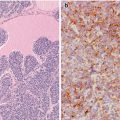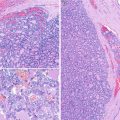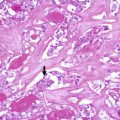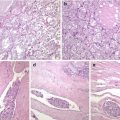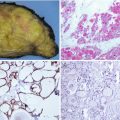© Springer International Publishing AG 2018
José Manuel Cameselle-Teijeiro, Catarina Eloy and Manuel Sobrinho-Simões (eds.)Rare Tumors of the Thyroid Glandhttps://doi.org/10.1007/978-3-319-61182-2_77. Therapeutic Options
Miguel Melo1, 2, 3 , José M. Cameselle-Teijeiro4, 5, 6 , Catarina Eloy1, 7 , Isabel Amendoeira1, 8 , Paula Soares1, 7 , Javier Caneiro-Gómez9 and Manuel Sobrinho-Simões1, 8, 7
(1)
Institute of Molecular Pathology and Immunology of the University of Porto (IPATIMUP), i3S–Instituto de Investigação e Inovação em Saúde, Porto, Portugal
(2)
Department of Endocrinology, Diabetes and Metabolism, Centro Hospitalar e Universitário de Coimbra, Coimbra, Portugal
(3)
Unit of Endocrinology, Faculty of Medicine, University of Coimbra, Coimbra, Portugal
(4)
Department of Pathology, Clinical University Hospital, Galician Healthcare Service (SERGAS), Santiago de Compostela, Spain
(5)
Health Research Institute of Santiago de Compostela (IDIS), Santiago de Compostela, Spain
(6)
Medical Faculty, University of Santiago de Compostela, Santiago de Compostela, Spain
(7)
Department of Pathology, Medical Faculty, University of Porto, Porto, Portugal
(8)
Department of Pathology, Hospital S. João, Porto, Portugal
(9)
Department of Pathology, Hospital Lucus Augusti, Galician Healthcare Service (SERGAS), Lugo, Spain
Introduction
Taking care of patients with rare tumours of the thyroid gland is a clinical challenge. Some of the variants discussed in this book are known to be associated with a guarded prognosis, namely, with increased recurrence rate and disease-specific mortality. Nonetheless, the small number of cases precludes the design of clinical trials to assess if a specific therapeutic strategy is valuable for those patients. The clinical challenge increases when physicians treat patients with tumours that are considered to be ‘the rarest of the rare’, a situation in which much of the evidence comes from anecdotal case reports.
In general, the treatment of patients with rare thyroid tumours follows the same principles used to guide the treatment of all the patients with thyroid cancer. For follicular cell-derived thyroid carcinomas, surgery, radioiodine and suppressive levothyroxine treatment are the cornerstones of the therapeutic approach [1–4]. For C cell-derived thyroid carcinomas, surgery and replacement levothyroxine treatment are the usual initial approach [5]. In selected cases of both follicular cell-derived and C cell-derived carcinomas, external beam irradiation and chemotherapy may also play a role. In recent years, the use of tyrosine kinase inhibitors to treat progressive, radioiodine-refractory differentiated thyroid tumours has been increasing, and they are now recommended as a preferential option to treat patients with diffuse and progressive disease. Tyrosine kinase inhibitors have also been approved for the treatment of patients with progressive medullary thyroid carcinoma.
In this context, clinical guidelines and recommendations from different scientific societies advocate that the initial treatment should be based on a risk stratification that takes into consideration clinical, biochemical, histologic and radiologic factors. More recently, molecular alterations of tumours were added to refine risk assessment. Patients with a higher risk of recurrence or disease-specific mortality should be submitted to more aggressive treatments, including extensive surgery, postsurgical radioiodine treatment with higher activities and suppressive TSH treatment with levothyroxine. Some of the variants discussed in this book have been recognized as important determinants of risk and incorporated in clinical recommendations. In this chapter, from the previously discussed rare tumours, we will highlight those that have already been incorporated in clinical recommendations, as well as those that should be submitted to a specific treatment.
Hobnail Variant of Papillary Thyroid Carcinoma
The hobnail variant of papillary thyroid carcinoma (PTC) is associated with aggressive clinical behaviour, including increase in disease recurrence and more frequent local (70%) and distant (30%) metastases [6, 7]. The 2015 American Thyroid Association (ATA) guidelines include the hobnail variant of PTC in the intermediate risk of recurrence category and recommend that patients harbouring these tumours have a favoured indication for postsurgical radioiodine treatment. It is also suggested that higher activities of radioiodine should be used to treat these patients. After the initial treatment approach (surgery plus radioiodine), a close follow-up of patients with the hobnail variant of PTC is recommended, even if they are considered to be disease-free.
Stay updated, free articles. Join our Telegram channel

Full access? Get Clinical Tree



